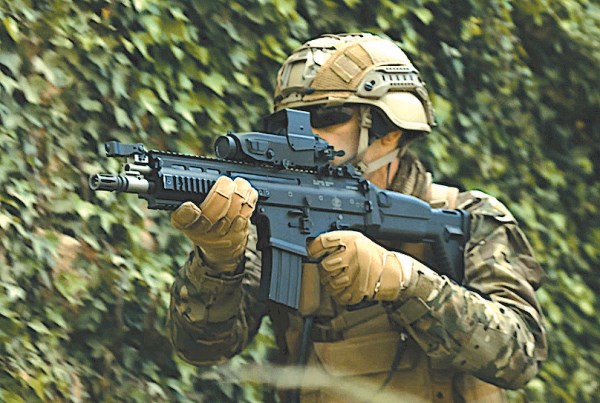
Thermal imaging has advanced in leaps and bounds, driven by market demand and the availability of new and innovative technologies. One company in particular has revolutionised the thermal imaging market to become global leaders in the design, manufacture and supply to high-end markets.
That company is French based LYNRED (previously known as SOFRADIR and ULIS), who engages in multi-million dollar contracts for supplying its sensors to major global defence corporations, including Raytheon, Rockwell Collins, Thales and MBDA. Nonmilitary space exploration contracts include NASA’s Copernicus LSTM Mission, the Venus Express, Hayabusa2, ExoMars and the Chandrayaan Moon Mission. LYNRED are now a go-to supplier of sensors that meet the demands and performance expectations of critical projects.
LYNRED and Pulsar
In 2010, Pulsar chose a LYNRED sensor for their first thermal monocular, the Pulsar Quantum HD50, many of which are still in service today. The type of sensors used by Pulsar thermal imagers are Amorphous Silicon Uncooled Focal Plane Arrays (a-Si UFPA), a technology that was pioneered by LYNRED. These sensors have key advantages over Vanadium Oxide (VOx) sensors (which is an older technology) such as longevity, robustness and a shorter response time. A-Si sensors are chosen for many mobile applications such as thermal weapon sights, armoured vehicle weapon guidance systems, firefighting, surveillance and aeronautics.
Pulsar’s new generation thermal imagers
The latest Pulsar thermal imaging optics use LYNRED Thermal Weapon Sight (TWS) Qualified: MILSTD 810 / MIL-STD 883 sensors. These sensors have a long life, can withstand harsh conditions and offer exceptional performance. Pulsar now manufactures their thermal imagers with an ultra-strong magnesium alloy housing, that efficiently dissipates heat, protects the internal electronics from heat associated damage, and maintains optimum image clarity. High performance sensors not only generate more heat, but require more battery capacity. All Pulsar thermal imagers have highcapacity, European made Lithium-Ion batteries that can be changed in seconds if required.
Any system is only as good as its weakest link. A Pulsar thermal imager complements its Milspec LYNRED sensor with the finest precision ground germanium optics, advanced image processing and a high resolution AMOLED display. It is difficult to judge a thermal imager indoors, such as a store, where short distances and brief usage only hint at an optic’s performance capability. Pulsar thermal imagers are used throughout New Zealand by Coastguard, Search and Rescue, Police, pest controllers and many recreational hunters.
Visit advancedoptics. nz to see the latest and greatest range of thermal imagers. Pre-ordering may be required due to demand and the global shortage of quality components.














